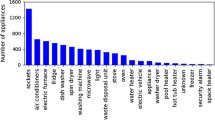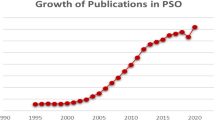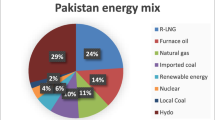Abstract
Due to the highly volatile prices of pool market, a main source of an electricity retailer to meet its clients’ demand, retailers generally sign forward contracts in order to protect themselves from being exposed to the risk imposed by the uncertain pool prices. These contracts, however, decrease the retailer’s expected profit owing to their higher average prices compared with the pool market. In this paper, focusing on price-based demand response programs, a two-stage scenario-based stochastic framework is presented for the medium-term decision-making problem of an electricity retailer. This study would demonstrate that demand response programs can be an effective tool to hedge against the risk and an appropriate alternative yielding less involvement in costly forward agreements. The proposed model decides the optimal level of participation in the pool as well as forward market and determines the electricity rates offered to the clients. The objective is maximizing the expected value of the retailer’s profit, whereas the exposure risk is confined to a pre-specified level. Moreover, the scenarios required for the stochastic programming problem are generated using a hybrid clustering technique based on K-means and particle swarm optimization algorithms. The proposed model is mathematically described as a mixed-integer linear problem which is solvable through commercial software packages. The efficiency of the provided approach is evaluated via a realistic case study according to the available data from Spain electricity market.











Similar content being viewed by others
Abbreviations
- \(\it {\text{bl}}\) :
-
Index of time blocks in time-of-use (TOU) rating scheme
- \(f_{\text{b}}\) :
-
Index of base-load forward contracts
- \(f_{\text{p}}\) :
-
Index of peak-load forward contracts
- \(h,t\) :
-
Index of time periods
- \(i\) :
-
Index of interruptible load contracts
- \(\omega\) :
-
Index of scenarios
- \(b_{t}^{\text{Peak}}\) :
-
Binary indicator which is equal to 1 if period t is in peak period, 0 otherwise
- \(B\) :
-
Number of time blocks considered in TOU rating scheme
- \(d_{t}\) :
-
Duration of time period t (h)
- \(E_{t,h}\) :
-
Clients’ demand elasticity at hour t with respect to the sale price at hour h
- \(M_{i}^{\text{IL}}\) :
-
Number of permitted interruptions related to interruptible load contract i
- \(N_{\text{FB}}\) :
-
Number of signed base-load forward agreements
- \(N_{\text{FP}}\) :
-
Number of signed peak-load forward agreements
- \(N_{I}\) :
-
Number of interruptible load contracts
- \(N_{T}\) :
-
Number of time periods
- \(N_{\omega }\) :
-
Number of scenarios
- \(P_{\omega ,t}^{C}\) :
-
Clients’ demand at scenario ω and period t (MWh)
- \(P_{\omega ,t}^{{C{\text{flat}}}}\) :
-
Clients’ demand at scenario ω and period t under flat rating scheme (MWh)
- \(P_{{f_{\text{b}} }}^{\text{FB,min}}\) :
-
Lower bound of the electricity purchased from base-load forward contract fb (MW)
- \(P_{{f_{\text{b}} }}^{\text{FB,max}}\) :
-
Upper bound of the electricity purchased from base-load forward contract fb (MW)
- \(P_{{f_{\text{p}} }}^{\text{FP,min}}\) :
-
Lower bound of the electricity purchased from peak-load forward contract fp (MW)
- \(P_{{f_{\text{p}} }}^{\text{FP,max}}\) :
-
Upper bound of the electricity purchased from peak-load forward contract fp (MW)
- \(P_{i}^{\text{IL,max}}\) :
-
Upper limit of the interruptible load related to contract i (MWh)
- \(\alpha\) :
-
Confidence level
- \(\beta\) :
-
Risk weight
- \(\theta_{{{\text{bl}},t}}\) :
-
Binary indicator which is equal to 1 if hour t belongs to time block bl, 0 otherwise
- \(\lambda_{{f_{\text{b}} }}^{\text{Base}}\) :
-
Price of base-load forward contract fb (€/MWh)
- \(\lambda_{{f_{\text{p}} }}^{\text{Peak}}\) :
-
Price of peak-load forward contract fp (€/MWh)
- \(\lambda_{\omega ,t}^{\text{Pool}}\) :
-
Pool market price at scenario ω and period t (€/MWh)
- \(\lambda_{i}^{\text{IL}}\) :
-
Cost of interruptible load per unit related to contract i (€/MWh)
- \(\lambda_{\omega ,t}^{\text{Sell}}\) :
-
Electricity sale price offered to clients at scenario ω and period t (€/MWh)
- \(\lambda_{s}\) :
-
Service-related part of electricity sale price (€/MWh)
- \(\lambda^{\text{Flat}}\) :
-
Electricity sale price under flat rating scheme (€/MWh)
- \(\pi_{\omega }\) :
-
Probability of scenario ω
- \(C^{\text{Forward}}\) :
-
Total cost of purchasing power through forward contracts (€)
- \(C^{\text{Pool}}\) :
-
Expected net cost of trading in pool market (€)
- \(C_{\omega }^{\text{Pool}}\) :
-
Net cost of trading in pool market at scenario ω (€)
- \(C^{\text{IL}}\) :
-
Expected cost of interruptible load contracts (€)
- \(C_{\omega }^{\text{IL}}\) :
-
Cost of interruptible load contracts at scenario ω (€)
- \(\it {\text{CVaR}}\) :
-
Conditional value-at-risk (€)
- \(P_{{f_{\text{b}} }}^{\text{Base}}\) :
-
Electricity purchased from base-load forward contract fb (MW)
- \(P_{{f_{\text{p}} }}^{\text{Peak}}\) :
-
Electricity purchased from peak-load forward contract fp (MW)
- \(P_{\omega ,t}^{\text{Pool}}\) :
-
Electricity energy traded in pool market at scenario ω and period t (MWh)
- \(P_{\omega ,t,i}^{\text{IL}}\) :
-
Interrupted load related to contract i at scenario ω and period t (MWh)
- \(\it {\text{PR}}\) :
-
Retailer’s expected profit (€)
- \(\it {\text{PR}}_{\omega }\) :
-
Retailer’s profit at scenario ω (€)
- \(\it {\text{IN}}\) :
-
Retailer’s expected income obtained by selling electricity to the clients (€)
- \(\it {\text{IN}}_{\omega }\) :
-
Retailer’s income obtained by selling electricity to the clients at scenario ω (€)
- \(U_{{f_{\text{b}} }}^{\text{Base}}\) :
-
Binary variable which is equal to 1 if base forward contract fb is signed, 0 otherwise
- \(U_{{f_{\text{p}} }}^{\text{Peak}}\) :
-
Binary variable which is equal to 1 if peak forward contract fp is signed, 0 otherwise
- \(U_{\omega ,t,i}^{\text{IL}}\) :
-
Binary variable which is equal to 1 if the customers’ load is interrupted with respect to contract i at scenario ω and period t, 0 otherwise
- \(\eta_{\omega }\) :
-
Auxiliary variable employed in CVaR calculation (€)
- \(\xi\) :
-
Value-at-risk (€)
References
Aalami HA, Moghaddam MP, Yousefi GR (2010) Modeling and prioritizing demand response programs in power markets. Electr Power Syst Res 80(4):426–435
Aghaei J, Charwand M, Gitizadeh M, Heidari A (2017) Robust risk management of retail energy service providers in midterm electricity energy markets under unstructured uncertainty. J Energy Eng 143(5):04017030
Ahmad J, Abrar M (2017) Demand side management based optimal energy management technique for smart grid. Iran J Sci Technol Trans Electr Eng 41(2):81–91
Ahmadi A, Charwand M, Aghaei J (2013) Risk-constrained optimal strategy for retailer forward contract portfolio. Int J Electr Power Energy Syst 53:704–713
Albadi MH, El-Saadany EF (2008) A summary of demand response in electricity markets. Electr Power Syst Res 78(11):1989–1996
Baldick R, Kolos S, Tompaidis S (2006) Interruptible electricity contracts from an electricity retailer’s point of view: valuation and optimal interruption. Oper Res 54(4):627–642
Birge JR, Louveaux F (1997) Introduction to stochastic programming. Springer, New York
Carrion M, Conejo AJ, Arroyo JM (2007) Forward contracting and selling price determination for a retailer. IEEE Trans Power Syst 22(4):2105–2114
Carrion M, Arroyo JM, Conejo AJ (2009) A bilevel stochastic programming approach for retailer futures market trading. IEEE Trans Power Syst 24(3):1446–1456
Conejo AJ, Carrión M, Morales JM (2010) Decision making under uncertainty in electricity markets. Springer, New York
Cui X, Potok TE (2005) Document clustering analysis based on hybrid PSO + K-means algorithm. J Comput Sci 27:33 (special issue)
Eberhart RC, Shi Y, Kennedy J (2001) Swarm intelligence. Elsevier, Amsterdam
Esmaeel Nezhad A, Ahmadi A, Javadi MS, Janghorbani M (2015) Multi-objective decision-making framework for an electricity retailer in energy markets using lexicographic optimization and augmented epsilon-constraint. Int Trans Electr Energy Syst 25(12):3660–3680
GAMS (General Algebraic Modeling System) (2016) [Computer software]. GAMS Development Corp., Washington, DC. http://www.gams.com/
Garcia-Bertrand R (2013) Sale prices setting tool for retailers. IEEE Trans Smart Grid 4(4):2028–2035
Gedra TW (1994) Optional forward contracts for electric power markets. IEEE Trans Power Syst 9(4):1766–1773
Hatami A, Seifi H, Sheikh-El-Eslami MK (2011) A stochastic-based decision-making framework for an electricity retailer: time-of-use pricing and electricity portfolio optimization. IEEE Trans Power Syst 26(4):1808–1816
Jain AK (2010) Data clustering: 50 years beyond K-means. Pattern Recogn Lett 31(8):651–666
Jain AK, Dubes RC (1988) Algorithms for clustering data. Prentice-Hall, Inc., Englewood Cliffs
Jain AK, Murty MN, Flynn PJ (1999) Data clustering: a review. ACM Comput Surv (CSUR) 31(3):264–323
Kennedy DJ, Eberhart R (1995) Particle swarm optimization. In: Proceedings of IEEE international conference on neural networks
Kettunen J, Salo A, Bunn DW (2010) Optimization of electricity retailer’s contract portfolio subject to risk preferences. IEEE Trans Power Syst 25(1):117–128
Kharrati S, Kazemi M, Ehsan M (2016) Equilibria in the competitive retail electricity market considering uncertainty and risk management. Energy 106:315–328
Kirschen DS, Strbac G (2004) Fundamentals of power system economics. Wiley, New York
Nazari M, Foroud AA (2013) Optimal strategy planning for a retailer considering medium and short-term decisions. Int J Electr Power Energy Syst 45(1):107–116
Niu H, Baldick R, Zhu G (2005) Supply function equilibrium bidding strategies with fixed forward contracts. IEEE Trans Power Syst 20(4):1859–1867
Nojavan S, Mohammadi-Ivatloo B, Zare K (2015) Optimal bidding strategy of electricity retailers using robust optimisation approach considering time-of-use rate demand response programs under market price uncertainties. IET Gener Transm Distrib 9(4):328–338
OMEL (Market Operator of the Electricity Market of Mainland Spain) (2016). http://www.omel.es
OMIP (Forward and Futures Market of the Iberian Electricity Market, Spain and Portugal) (2016). http://www.omip.pt
Rana S, Jasola S, Kumar R (2010) A hybrid sequential approach for data clustering using K-Means and particle swarm optimization algorithm. Int J Eng Sci Technol 2(6):167–176
Rockafellar RT, Uryasev S (2000) Optimization of conditional value-at-risk. J Risk 2:21–42
Rockafellar RT, Uryasev S (2002) Conditional value-at-risk for general loss distributions. J Bank Finance 26(7):1443–1471
Shahidehpour M, Yamin H, Li Z (2002) Market operations in electric power systems: forecasting, scheduling, and risk management. Wiley, New York
Tsai CY, Chiu CC (2008) Developing a feature weight self-adjustment mechanism for a K-means clustering algorithm. Comput Stat Data Anal 52(10):4658–4672
Author information
Authors and Affiliations
Corresponding author
Rights and permissions
About this article
Cite this article
Nasouri Gilvaei, M., Baghramian, A. A Two-Stage Stochastic Framework for an Electricity Retailer Considering Demand Response and Uncertainties Using a Hybrid Clustering Technique. Iran J Sci Technol Trans Electr Eng 43 (Suppl 1), 541–558 (2019). https://doi.org/10.1007/s40998-018-0150-9
Received:
Accepted:
Published:
Issue Date:
DOI: https://doi.org/10.1007/s40998-018-0150-9




